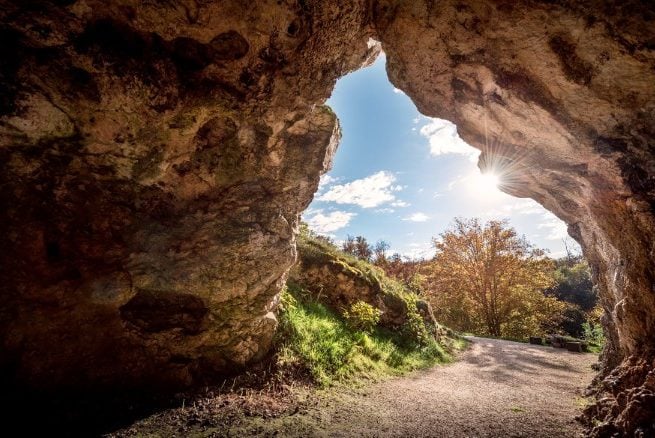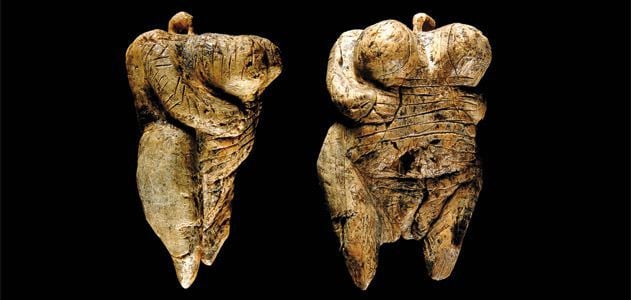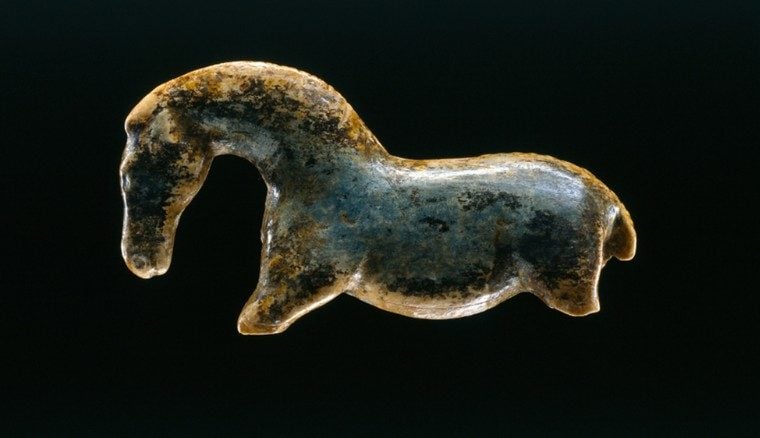Art World
German Caves Holding Some of the World’s Oldest Art Become a UNESCO World Heritage Site
The caves feature art dating from 43,000 to 33,000 years ago.

The caves feature art dating from 43,000 to 33,000 years ago.

Sarah Cascone

Six caves in southwestern Germany’s Swabia Jura region, home to some of the world’s oldest art, have been added to the World Heritage List by the United Nations Educational, Scientific and Cultural Organization (UNESCO) World Heritage Centre. The caves were occupied some 43,000 to 33,000 years ago, and are among the earliest known dwelling places of modern humans in Europe.
“These archaeological sites feature some of the oldest figurative art worldwide and help shed light on the origins of human artistic development,” said UNESCO in a statement. “Among them are carved figurines of animals (including cave lions, mammoths, horses and cattle), musical instruments and items of personal adornment.”

Venus of Hohle Fels is a 35,000- to 40,000-year-old figurine carved from mammoth ivory thought to the be the oldest figurative human art in the world. Courtesy of H. Jensen/University of Tübingen.
More than 40 carved ivory figurines have been found in the caves, including one called the Venus of Hohle Fels, discovered in the cave of the same name in 2008. Dating to about 35,000 to 40,000 years ago, the tiny statue, of a heavyset woman with large breasts and visible genitalia, is the earliest known example of figurative human art.
Archaeologist Nicholas Conard, whose team found the figure, called it “very sexually charged,” and some headlines reporting the discovery referred to it as “prehistoric porn.”
Excavations of the Ice Age–era caves began in the 1860s. “This long and highly productive research tradition has helped to form our understanding of the European Upper Palaeolithic,” noted UNESCO’s temporary listing for the site, which was submitted for consideration for World Heritage Status in January 2016.
“We now have items from a time when man started to develop something we call ‘cultural modernity,'” Stefanie Kölbl, managing director of the Museum of Prehistory in Blaubeuren, home to many of the artifacts from the German caves, told CNN. “Their lives were about much more than just hunting and eating. We have fantasy, imagination and an image of man’s surroundings. And while we have signs of symbolic thinking, abstraction and expression from discoveries in Africa, we didn’t have perfect carved figurines like these.”
The annual World Heritage Committee meeting, which took place July 2–9, added a total of 11 sites to the World Heritage List, in addition to expanding the scope of two existing sites in Germany and France. These include Norse and Inuit farming landscapes in Greenland, dating from the 10th and the 18th centuries; Iran’s historic city of Yazd; and 16th- and 17th-century defense works erected by the Venetians in Italy, Croatia, and Montenegro.

A “Wild Horse” figurine found in Vogelherd Cave in Germany’s Swabian Jura region, among the oldest carvings made by humans. Courtesy of the Museum Schloss Hohentübingen, Tübingen, Germany.
The other additions include the Turkish archaeological site of Aphrodisias and the Valongo Wharf Archaeological Site, the remains of a stone pier where ships arriving from Africa docked in Rio de Janeiro. The wharf saw the arrival of some 900,000 slaves beginning in 1811. UNESCO called it “the most important physical trace of the arrival of African slaves on the American continent.”